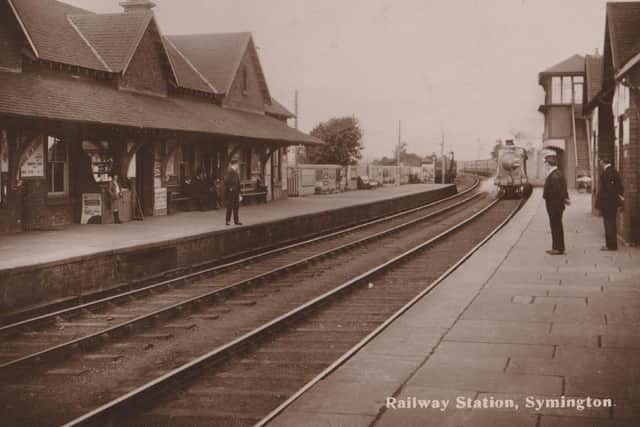Symington Station was a cut above


That led me to this week’s article. At one time, a proposal was made to bring Symington Station back into use; presumably that is on hold.
The picture used for this article demonstrates just how good even small stations like Symington once were.
Advertisement
Hide AdAdvertisement
Hide AdA glimpse at the platform shows that travellers were well catered for. The lady is standing in front of a kiosk providing drinks, food and newspapers.
There were waiting rooms which were kept warm in winter. In 1915, when this card was posted, there would have been no need to stand around in the wind or rain.
One can only reflect that Caledonian Railway cared for the comfort of its passengers, a situation which stands in sharp contrast to today!
In those days, staff made sure everything was attended to – from the cleanliness of the toilets to the manning of the signal boxes.
Advertisement
Hide AdAdvertisement
Hide AdThe train itself is of interest in that the carriages were quite spacious; though seating in third class was hard, at least the windows could be opened in the express trains.
Symington Station has a long history as an important rail junction. It stood on the West Coast mainline as well as being the junction for the Biggar to Peebles line.
It was also important for its meat market; meat was loaded onto a special train and transported to Smithfield Market in London...until 1982.
Polish troops arrived at Symington station in 1940; they camped at Symington Mill until they were sent to the East coast. Unfortunately, some died in the camp and lie buried in the graveyard of the old ruined kirk.
Advertisement
Hide AdAdvertisement
Hide AdUp until the 1930s, rail was the way children travelled from Symington for their Higher-Grade education at Biggar High.
The station dated to 1845; it had to be moved to create a bigger station with three platforms for the Biggar to Peebles line in 1863, which had a shorter life than most as it closed in 1950.
Symington Station continued to be a stop on the West Coast mainline until the Beeching Cuts in 1965 brought its demise.